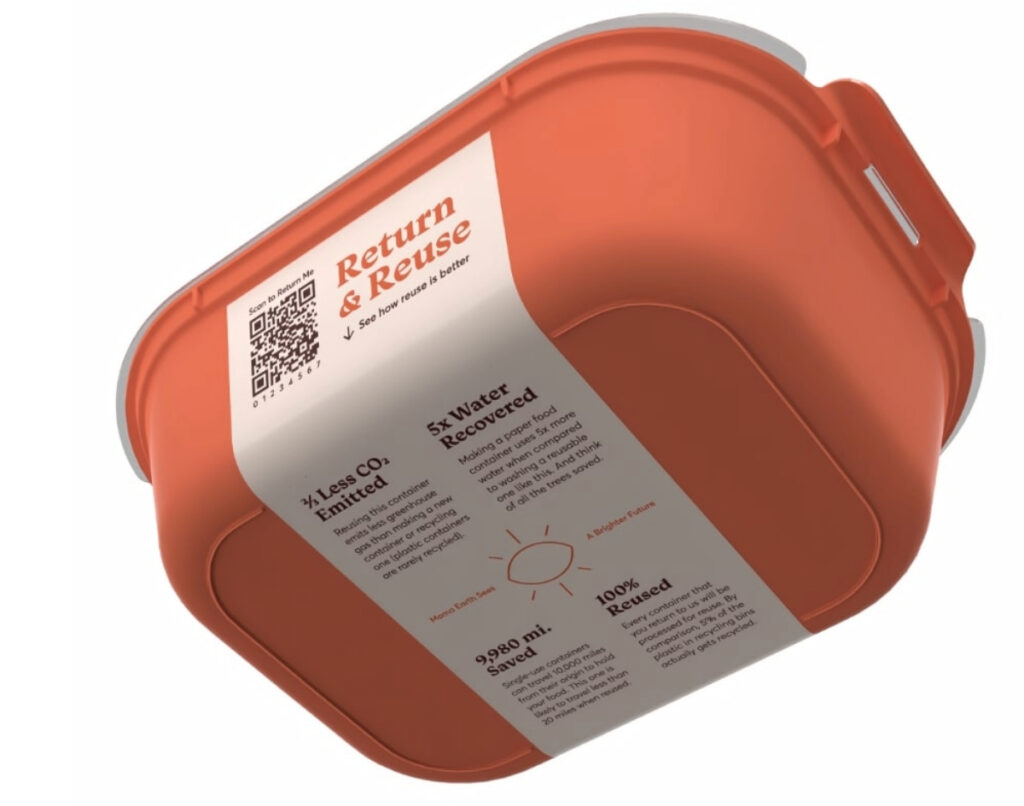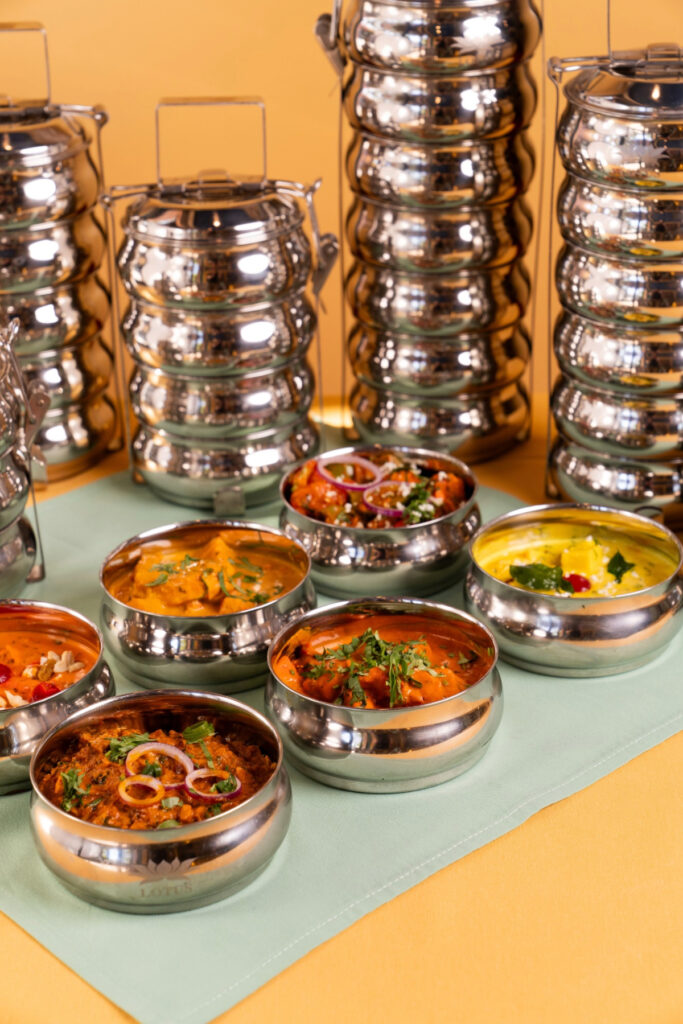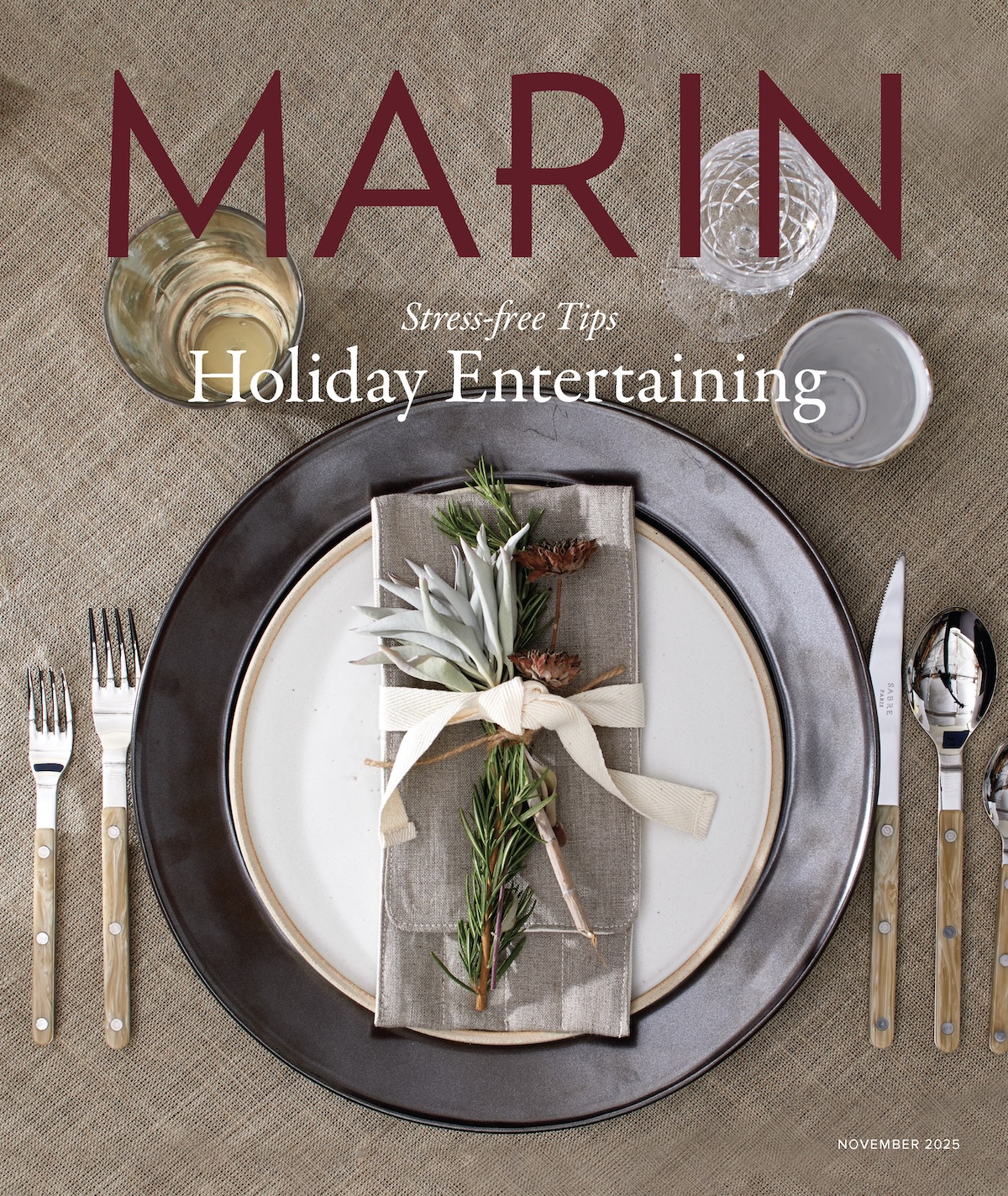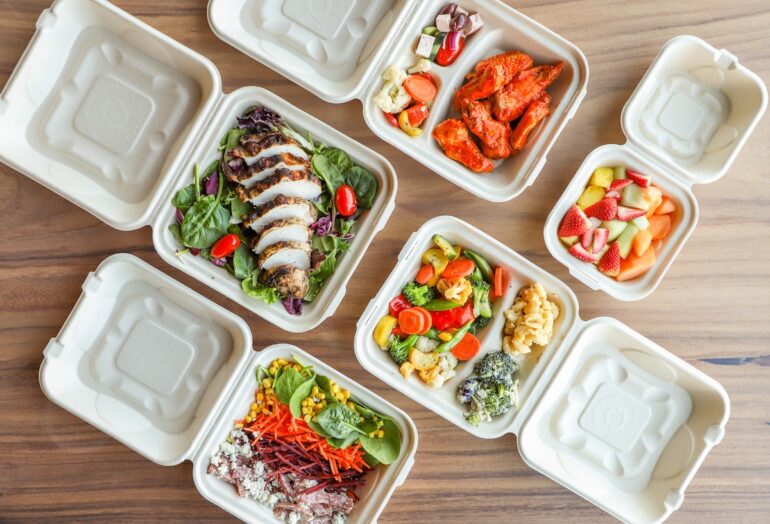Here’s a data point to ponder: Every day, Californians dispose of enough plastic to fill 290 Olympic-sized swimming pools. Packaging, including takeout containers for restaurant meals, occupies 50% of California landfills.
Recognizing our problem with plastic pollution, state and local governments passed a bevy of regulations aimed at slimming down the garbage pile, including SB54 which bans the production of polystyrene (a.k.a. Styrofoam) containers for takeout. Though there are always loopholes, this push to eliminate forever plastics (polystyrene never biodegrades, just breaks into tiny pieces) trickles down to restaurants who must rethink their contribution to the takeout packaging pile.
Molded Fiber for the Compostable Win

Cue the molded fiber clamshell. You know them: Roughly 9 inches by 9 inches and the color of vanilla bean ice cream, they are restaurateurs’ go-to when faced with a polystyrene-free world. “To compete from a price standpoint, molded fiber is one of the best options,” says Deven Young, vice president of sales at Santa Rosa’s World Centric, a seller of high-quality, certified compostable products.
The pulping stream Worldcentric relies on for its molded pulp manufacture is largely happening in China, where, Young tells me, the pulp industry is advanced and benefits from a nearby abundance of sugarcane waste. “It is difficult for domestic manufacturing to compete with the quality and speed with which these products can be produced in Asia,” Young says.
Noting that styrene is completely leak-proof but unsustainable, Young points to World Centric customers like Yum Brands’ restaurants KFC and Taco Bell. With takeout business often exceeding 60% of sales, these quick-service restaurants’ shift to molded fiber clamshells equals a significant reduction in styrene. “It performs well and it’s cost-effective compared to laminated paperboard, styrene and other less sustainable products,” Young says. “100% of the time, price is a consideration.”
Price is Always Top of Mind
Though Sushi Ran owner Yoshi Tome does use compostable containers for rice-based dishes and other items at his fine dining restaurant in Sausalito, his team packs 100 to 200 Japanese-made wooden containers each night for takeout sushi. Each box can cost as much as $5. “How to justify the cost?” Tome asks. “It’s hard to make economic sense of it.”
The guest experience is the reason he continues the program. “They’re beautiful containers, not available in the United States,” Tome says. “Guests like it and we get so many compliments.”
Tome says the lightweight boxes are reusable and, since they are wood, can be placed in the green bin for composting, but he doesn’t ask for them back. His takeout business, up from 1–2% in 2019 to 15% today, is a solid argument for the boxes’ cost. “We figured out a way to make food taste as good for takeout,” he says. “We are a business first and need to adjust to what guests want to have.”
The Takeout Routine is Here to Stay

Peter Schumacher, restaurateur at Mill Valley’s Bungalow 44 (as well as Buckeye Roadhouse, Playa and The Corner Bar) notes that, before Covid-19, maybe half a percent of total revenue came from takeout. Today, that number is around 5–7% of total revenue and feels like it is here to stay. “It’s become a routine for people,” Schumacher says. At Bungalow 44, Schumacher and his team source molded pulp clamshells for items like their Kickin’ Fried Chicken and Bungalow Burger. “We only do takeout for items that do well on takeout,” he says. Yes to takeout salmon and short ribs entrees and all the salads. No to oysters, flat bread and steak tartare.
Marin’s rules, confusingly, vary by where a restaurant location is located. Mill Valley and Sausalito have different rules than, say, San Rafael or Fairfax. Restaurants in unincorporated Marin have yet another set of rules, making rule-following difficult for small operators. While restaurateurs I spoke with wish for more even enforcement, self-regulation seems to be the rule of thumb. Some restaurants, such as Corte Madera’s Pacific Catch and Larkspur’s Hog Island participate in The Surfrider Foundation’s Ocean-friendly Restaurants Program, committing to use no expanded styrene or plastic water bottles or bags, and to offer only reusable foodware for onsite dining.
Making Reusables the Norm

Certified as a B-Corp since 2010 and as a California Benefit Corporation since 2013, World Centric envisions compostables (according to their company mission statement) “as a sustainable alternative and necessary bridge to a more circular future” — a future where reusables are the norm. That’s where companies like San Francisco’s Sparkl Reusables come in.
In partnership with Zero Waste Marin and The Agricultural Institute of Marin, Sparkl launched a reusable foodware program at the Thursday Farmers Market in San Rafael earlier this year. All vendors at the market were given reusable containers, such as a large clamshell made of sturdy BPA-free polypropylene, or in recycling terms, Number 5 plastic. “We do a lot of high-volume projects,” says Sparkl CEO Paul Liotsakis. “This clamshell is good for over 1,000 uses.” Guests who purchase meals or drinks from vendors can place dirty clamshells, cups and plates in Sparkl’s bins. The company then washes them like a restaurant would and puts them back into service.
Made in the USA, the clamshell is roughly 50% new and 50% recycled plastic. In an effort he calls “eco-championing,” Liotsakis repurposes retired products as trays for food trucks or other delivery programs at Smith Ranch Homes, Marinwood Market and elsewhere. As of this writing, the farmers market pilot runs through March.
Building Sustainable Reusable Systems

Lindsey Hoell, CEO of Hayward’s Dispatch Goods, launched her business in 2016 to supply restaurants with stainless steel takeout containers. “The return rates decreased and the economics changed,” Hoell says, making the business unsustainable. Hoell shifted the business model to higher volume food businesses where the economics made sense. That includes meal and grocery delivery for the likes of Stanford Hospital, Thistle, HelloFresh and AstraZeneca’s corporate campus. “Think about it like linen service,” Hoell says, where a business uses contractors who deliver clean linen while taking away soiled linen. “We do that but for packaging.” Her containers, value-engineered to be price-competitive with compostables, reduce the risk of lost inventory and the friction of the earlier business model.
Learning from earlier missteps, Dispatch Goods works to ensure clients build a system of reusables across their food business and don’t start with a single item, like a cup or a clamshell. “Typically, we see return rates of over 90% if they implement an entire system,” Hoell says. Return rates for one item pilots see a much lower return rate, in the 50–70% range. Ample opportunities for return — many bins in many places — are also key. Clearly marked bins further boost the return rate. “People learn the habit,” Hoell confirms.
Stainless Steel Is Still a Reusable Restaurant Solution

Stainless steel containers can work for some food businesses. San Rafael’s Lotus Cuisine of India launched a tiffin program in 2019. Tiffins — stackable, round containers clipped together and, in India, delivered by dabbawallas from home cooks to office workers — are a traditional form of food delivery for at least 130 years. “Purchase the tiffin once and we pack the food in the tiffin,” says Alisha and Navjot Sroa, the restaurant’s second-generation owners.
On the restaurant’s takeout order page, click “tiffin” on the top navigation to select the proper size — two to six tiffins are available and guests pay a one-time fee of $12.95 for a two-tier, up to $29.95 for a six-tier — and indicate whether you are a new or an existing tiffin customer. When you pick up your order, your food will be packed in tiffins which can be returned infinitely to the restaurant for washing. “You can eat right from the tiffin,” Sroa says. Sroa estimates that 60% of their business is takeout, of which 20–25% is in tiffins. “Guests see others carrying out their orders and want in on it,” Sroa says. “People get hooked on it.”
Up next: A future article about straws and utensils will continue our coverage of sustainable food packaging. Click here to read about new wine and spirits packaging.

Christina Mueller is a long-time Bay Area food writer. She hails from the East Coast and has spent way too much time in South America and Europe. She discovered her talent as a wordsmith in college and her love of all things epicurean in grad school. She has written for Condé Nast Contract Publishing, Sunset, and the Marin Independent Journal, among others. She volunteers with California State Parks and at her childrens’ schools, and supports the Marin Audubon Society, PEN America, and Planned Parenthood. When she is not drinking wine by a fire, she is known to spend time with her extended family.


